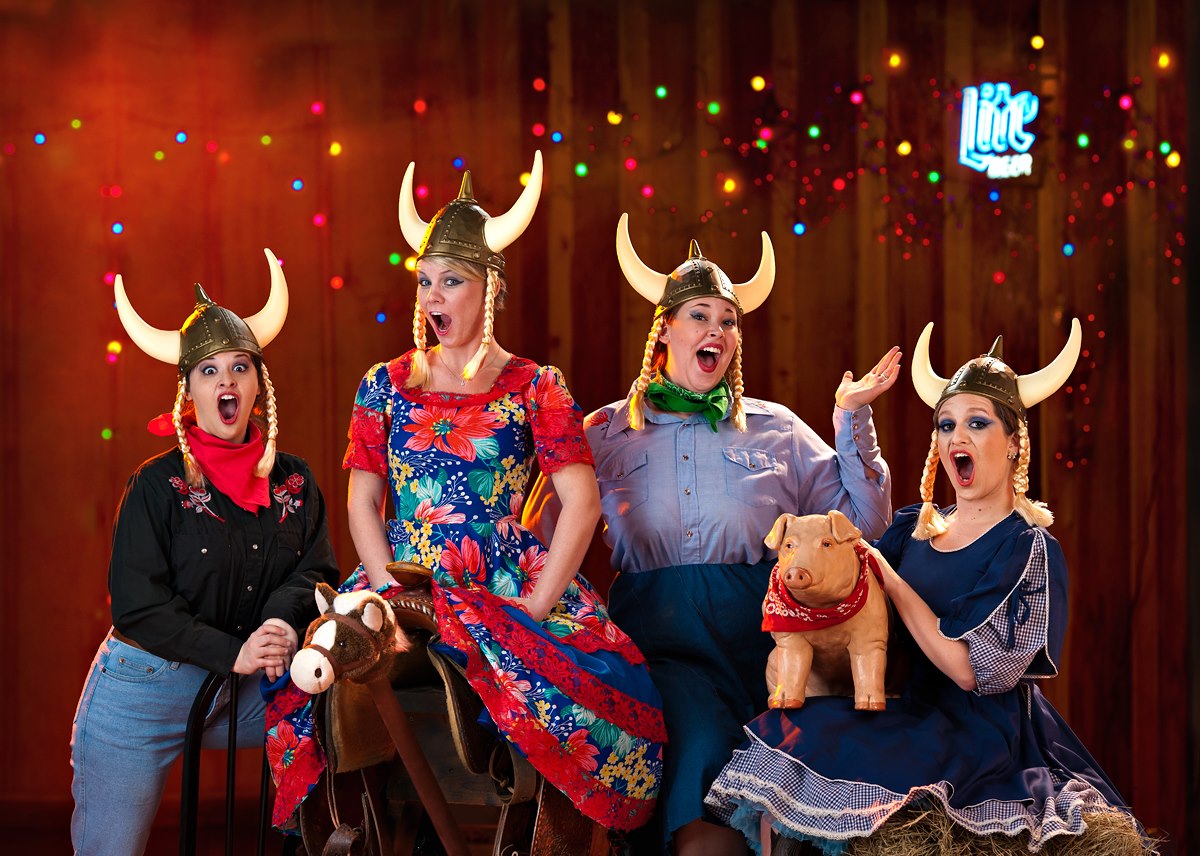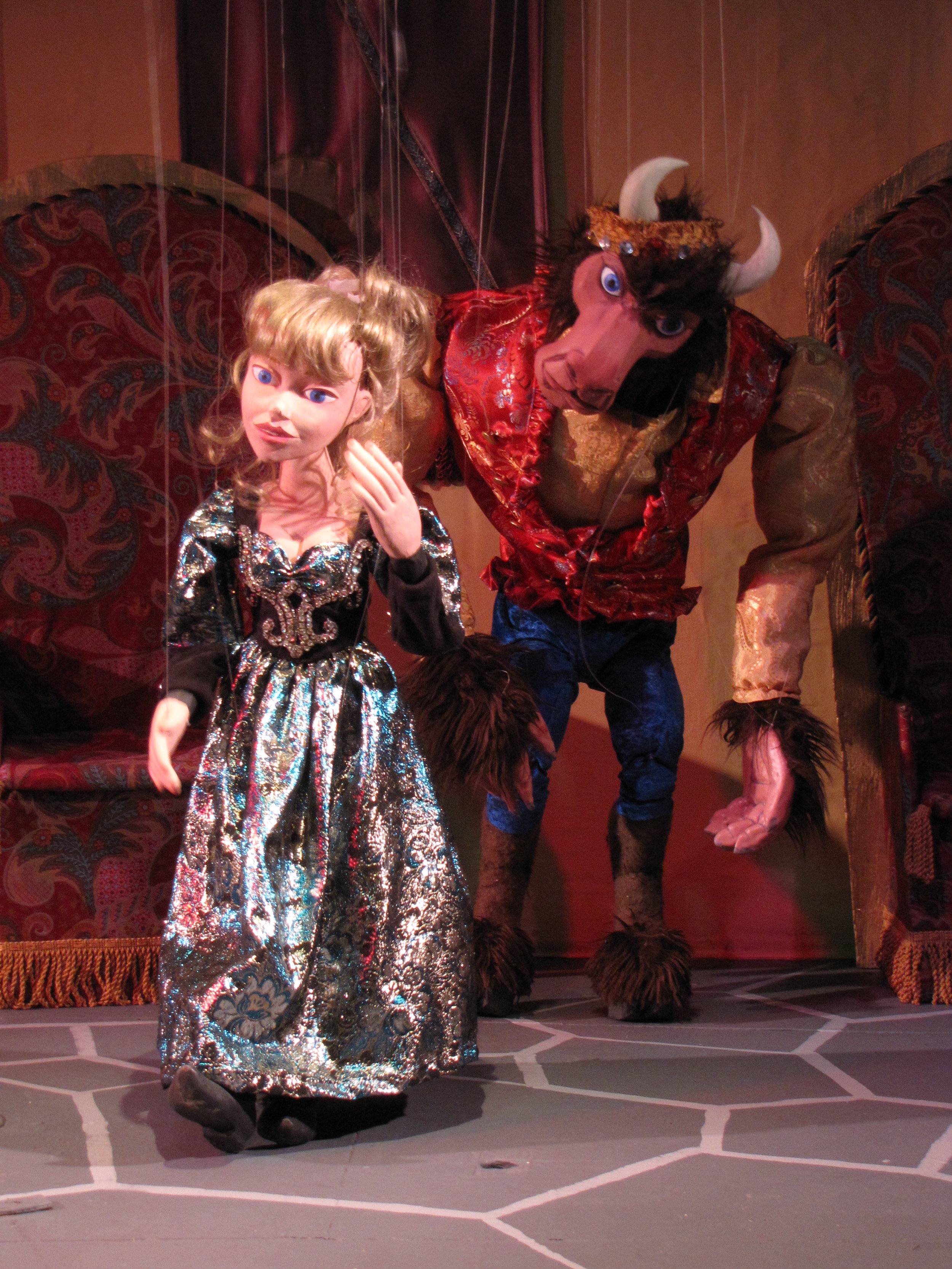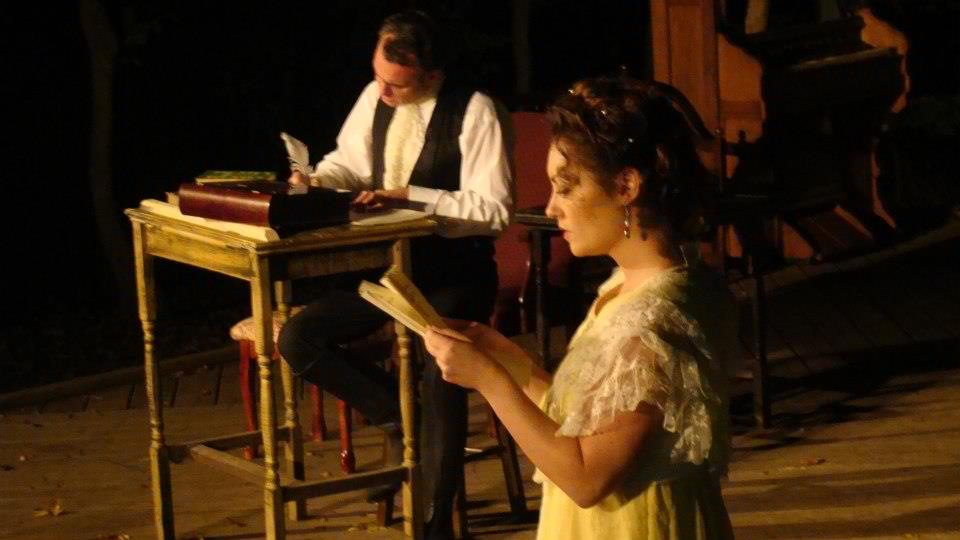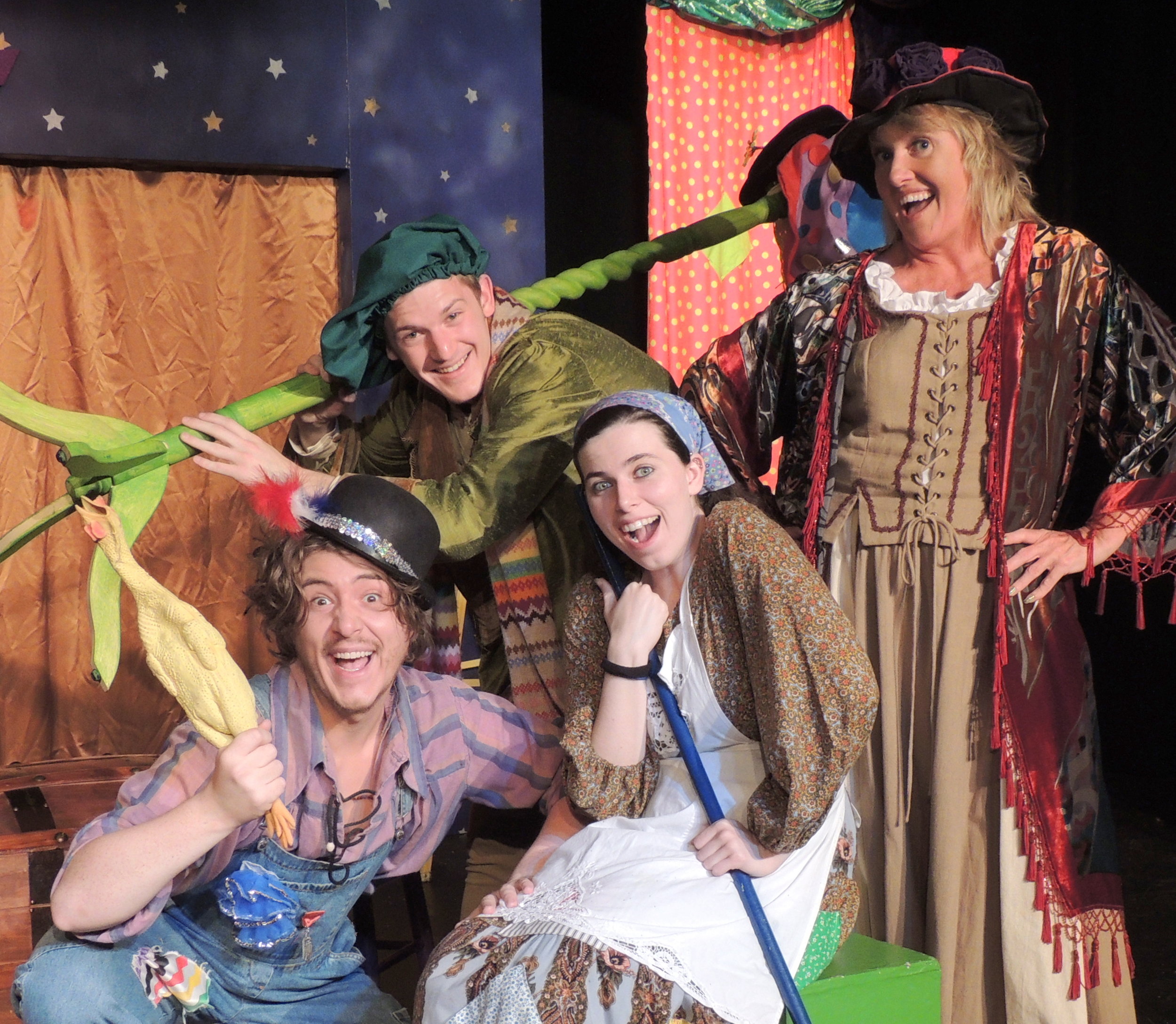Will Moreau Goins
Duyugodv Ayosdi Ji Dekananogis Awohali Tsiyohi Uhyali Do
December 2, 1961 - November 11, 2017
Around the theater, he was always called Will Moreau. Or sometimes just Moreau. And among friends, "Dr. Moreau," a winking reference to the H.G. Wells character played on screen by Charles Laughton, Marlon Brando, and Burt Lancaster, but also an acknowledgement of Will's life outside the theater, as a scholar of Native American culture with a doctorate in anthropology. In that world he was more often referred to as Dr. Will Goins, and he always explained with a laugh that stars like Angelina Jolie and Tom Cruise use their middle names for their acting careers, so why couldn't he?
My friend William Moreau Goins came into this world on December 2, 1961, and left us Saturday, November 11, 2017. Like the face of America, his heritage was a mix of ethnicities, but he was descended from Cherokees in North and South Carolina on both sides of his family, including a great-great-grandfather who was a medicine man in Oconee County, and that's the path he followed, becoming Chief of the South Carolina Cherokee Tribe, and Chief Executive Officer of the Eastern Cherokee, Southern Iroquois, and United Tribes (ECSIUT.) Film maker Antara Brandner, who worked with Will on a number of cultural and spirituality-themed projects, says that he told her recently that his full Cherokee name was Duyugodv Ayosdi Ji Dekananogis Awohali Tsiyohi Uhyali Do. (Although several sites have only the final three names listed.)
Growing up in the Washington, DC area, Will double majored in Anthropology and Communication (including TV, Radio and Film Production and Performance) at George Washington University, and his first professional jobs were media-related, at agencies including the Bureau of Indian Affairs and the U.S. Indian Health Service. He later joked that he and his co-workers - many of whom acted in The Free Spirit Players, a Native American theater company that Will founded and was its artistic director in the 80's - were "Fed-skins," taking a pejorative term and turning it into a joke. Which is the sort of thing Will always did. He later earned a Master's degree in Educational Administration, and a doctorate in Anthropology from Pennsylvania State University. Only a couple of weeks before his death, while he was promoting his upcoming film festival, I teased him, asking him if that was Penn State, or State Pen? That kind of banter flowed freely whenever Will was around.
After working for museums in Pennsylvania, DC, and the Detroit area, Will moved to South Carolina in 1997 to be closer to family. He told me that he was amazed to discover that "the state didn't know who its first residents were," and that almost no one with Native heritage - Cherokee in particular - considered themselves to be Native. Much of that stemmed from a couple of centuries in which most of South Carolina's indigenous peoples opted to blend in with and marry into the state's white and African-American population, at a time when their relatives in North Carolina were being relocated to Oklahoma, and when a Native person of color wasn't allowed to own land.
And so Will set out with a simple mission: to educate people of Native descent about their heritage, and to tell the rest of the world "We're still here."
Along the way he partnered with the Nickelodeon to host the Native American Film and Video Festival of the Southeast, the organization's first "niche" programming event which provided the template for more elaborate events like Indie Grits; the festival concluded its landmark 20th year earlier this month. He worked with representatives from state government to acknowledge November as Native American Heritage Month in South Carolina, and to designate November 18th as Native American Awareness Day. The symbolic importance of those proclamations aside, he also helped the Cherokee in South Carolina to achieve formal state recognition as a tribe, and worked with the Commission on Minority Affairs to expand their mission to include Native Americans.
He led the Cultural Arts Ensemble, an American Indian dance group, which performed at numerous festivals and events, and was active with the South Carolina Traditional Arts Network. Will did countless presentations to school groups as a visiting artist and speaker through the S.C. Arts Commission and the SC Humanities Council, sometimes appearing in character as a particular historical figure, such as Sequoyah. He was always a popular guest lecturer at Heathwood Hall, which his niece Amanda attended, and he was instrumental in the creation of an Indian Medicine Wheel Garden in front of the school's campus center in 2010. He painted. He sang, and danced. A video clip of Will performing a traditional song can be seen here: https://www.youtube.com/watch?v=JFRobuzlqn0
He also created beadwork, a traditional craft learned from his great aunt. He did demonstrations of Native cooking techniques, and I fondly recall his appearance on campus a few years ago, serving his "Cherokee chili" to intrigued international students at an event hosted by USC's Office of Multicultural Affairs. (It was basically dough dipped in boiling oil, then lifted out to serve as a sort of flatbread on which chili was then poured.) Books that he edited included: South Carolina Indians Today : An Educational Resource Guide (1998), The People Speak: A Collection of Writings by South Carolina Native Americans in Poetry, Prose, Essays and Interviews (2002), and South Carolina's Native American Cooking : Cherokee Traditional & Contemporary Recipes with Additional Southern Recipes by Other Indigenous Natives (2005.) As a member of the McKissick Museum's Advisory Council, he helped revive their annual celebration of folk life, rebranding the event as "FOLKFabulous," and served as guest curator for the year-long exhibition “Traditions, Change and Celebration: Contemporary Native Artists in the Southeast.” Most recently, he collaborated on expanding the footprint of FOLKFabulous to reach a much wider audience, relocating to become part of the annual State Fair, and promoting their current exhibition “WELL SUITED: The Costumes of Alonzo V. Wilson for HBO’s Treme” which celebrates the blending of Native and African American culture and music in Mardi Gras. In 2008, he was given the Jean Laney Harris Folk Heritage Award for his work in the preservation of traditional arts and culture.
Will was also a fervent supporter of progressive and faith-based causes. He served as Board President of the Interfaith Partners of South Carolina, representing the inclusive spirituality of Native Americans. At a screening of the film Kateri, about the first Native American saint, just three days before his death, Will was asked about the movie's historical authenticity. He noted that had the film been written by a person of Native descent, a key line spoken by a priest would instead have been spoken by Kateri herself, that the Christian God and the God worshipped less formally by Indians were one and the same.
Some in the theater community knew much of the preceding, but many didn't. They just knew Will as a prolific actor, and a fun guy to be around. Who knows how many shows he was in? I saw him in 19 over the last 9 years, and that was surely only half that he did in that timeframe, and there would have been that many or more dating back to 1997, when he made his Columbia stage debut as Bernardo in West Side Story at Town Theatre. Just a few recent credits include Ado Annie's shotgun-totin' father in Oklahoma!, the gambler whose heart is set on a horse named Valentine in Guys and Dolls, and the elocution professor in Singin' In the Rain. Sugar, Evita, Les Miserables, Amadeus...the list is nearly endless. Will never had a problem being in the ensemble, or playing small character roles. In fact, he could often be found crewing backstage for shows he wasn't in. Family was very important to him, and often he wouldn't audition for a play if he knew that the runs dates conflicted with one of his nieces' graduation ceremony.
Laurel Posey had this to share:
I think Will was in the majority of the shows I've done since moving here in 1994, including The Producers, The Full Monty, Ragtime, La Cage Aux Folles, Seussical, and many others, mostly at Workshop. He worked everywhere, loved every single role, and loved to bond over those shared experiences.... I did love doing Tarzan with him (at Town Theatre) mostly because I loved watching (him with my husband) Frank together in an ad-libbed, pre-2nd-act bit where Frank as Professor Porter dubbed him "Kangala," his trusty companion on safari. I loved watching him work in Oklahoma at Town, too; he made Andrew Carnes hilarious and unforgettable (which is a tough job as scripted). No matter where you put him, he gave it his all and usually offered something unexpected, unique, and memorable. Will never did anything halfway... he was bigger than life, in all things. He was passionate, strong-willed, and tough. He was also incredibly generous. One of the things I've been thinking a lot about over the last few days is how he accepted everyone for exactly who they were. Now, if he thought you ought to be doing something differently, he'd tell you, repeatedly and in detail! But no matter who you were, he appreciated you, warts and all. He wanted everyone to succeed... friends, strangers, his community, organizations, governments... he saw potential in everyone and everything. He was a good man and I can't believe he's gone. We'll not see his likes again and the world's a little dimmer now.
Kerri Roberts played Will's daughter in My Fair Lady at Town in 2016. When I met her a few months ago, we pointed out this made her my stage granddaughter, or perhaps step-daughter, since I had played Will's role of Alfie many years previously. Will and I joked that the text clearly states that Alfie is part Welsh, and that was the reason for Will's tan complexion - he wasn't Native, he was just Welsh. Kerri shared these thoughts, which could have come from any of hundreds of former castmates:
In 1998, I was a senior at Columbia College. I auditioned for my very first role in a musical theater production, Town Theatre’s West Side Story. I was cast as Maria - a dream role - but I felt nervous going into rehearsals because I really only knew one other person involved in the show. Will Moreau was cast in the role of Bernardo, Maria’s brother. Having recently moved to Columbia, this was also Will’s first show in the Columbia theater community. From the very beginning Will was kind, reliable, supportive, and committed! Even though he, in his mid-thirties, had already done so much with his life, and I was a 21-year-old college kid, he made me feel special and took time to encourage me! That show, that cast, was magical! Some of those people, including Will, became friends that I will always have a special connection to. I would not share the stage again with Will for 18 years, but he was implanted in my heart!
My family moved to Africa to live and work for 7 years and shortly after we returned at the end of 2014, I saw an audition posting for Mary Poppins. I decided to go for it and audition! It felt SO great to be back on the stage after 10 years and doing what I love most! When tech week came around, who did appear backstage working crew? None other than Will Moreau! What a joy to reconnect! He was so genuinely interested in what my life had been life in Africa, what my life was like now, my kids, etc. He was such a person of great depth. There was nothing at all shallow about him. We could skip over the small talk and get right to the good stuff. The stuff that mattered, that we were passionate about. Interspersed with silliness of course - Will was never always serious!
In the summer of 2016, my three daughters also got to know Will as he played King Triton in Town’s The Little Mermaid. They were in the ensemble for that show and of course they also loved him. During that summer the announcement came out for My Fair Lady auditions. I remember basically jumping up and down and squealing with Will because we were both so excited! Eliza Doolittle was a bucket list role for me and Will really wanted to play the role of Alfred P. Doolittle, Eliza’s father. Auditions and call-backs later, more squeals and hugs and jumping around ensued when we both accepted the roles we so desperately wanted to play. It was definitely the role of a life-time for me. Will was there all the way encouraging me once again - always making me smile and making me feel so good about my performance. And he has to be the most lovable Alfie Doolittle that there ever was. Oh my goodness. Will poured his heart and soul and so much time and research into that role, as I’m sure every role he ever played. He just loved it and his love radiated as he performed. After that he never stopped greeting me as “my noble daughter”.
He often asked me about roles and told me which ones he thought I needed to do someday. We also dreamed about doing a “reunion” of our West Side Story cast and performing the “middle aged” version of the show! Can you imagine? He was so supportive of the arts and artists in Columbia and really worked to try and bring people together within the arts community. He was a great example in that way.
Some of my favorite memories will be fighting over the Secretary of State parking place (after hours of course) in the parking lot next to Town Theatre; watching Will, Chris Kruzner, Bob Blencowe, and Bill Dewitt pal around together; the adventure of never knowing what might come out of his mouth on stage; the time he performed “With a Little Bit of Luck” with his fly down (and the comments that followed!); watching him engage my introverted husband in deep conversation; his encouragement to me in ministry opportunities I had; his willingness to be involved even if he was just lending a hand back stage; his passion for the marginalized; his intellect; his ability to gently and gracefully talk to those who disagreed with him on political, religious, or social issues; his openness to learn from others and to teach; his very recent visit to my daughter’s 3rd grade class and her new-found interest in her Cherokee heritage.
I wish now that I had many more opportunities to talk to him. To learn from him. There was still so much about him that I didn’t know. Certainly I wouldn’t claim to be one of Will’s closest friends, but I would call him a big brother. Mi hermano. I will miss him. The world will not be the same.
Two other bucket list roles Will achieved were the Engineer in Miss Saigon, and Clopin, the Gypsy King in Hunchback of Notre Dame, the latter becoming his last role on stage. Shirley McGuinness was in both productions with him at Town Theatre, and also knew Will from St. Peter's - few people knew that Will was actually raised Catholic, and still attended mass on occasion. She said:
There are faces around Columbia that remind you that even though this City is the State Capital, it really can be a small welcoming town if you are willing to open your heart, broaden your perspective and be willing to share an experience. Such moments can be epic as sharing a stage, motivating as calling for justice at a rally or moving as holding a hand in prayer. Will Moreau was one of those first faces for me. Not only was he willing to share the story for anyone who took the time to hear, but he was an active listener and encourager of making sure your voice was heard
Former congressional candidate Arik Bjorn shared this:
I considered Will a mentor, which he perhaps did not realize. I wanted Will to be at every major rally and event in which I participated. His presence was a very blessing upon the cause, and his embrace an encouragement that I was headed on the right path. (Because he never would have hesitated to tell me otherwise.)
One of my favorite moments was at the recent Love Thy Neighbor rally at the SC State House, which I emceed. Just minutes before the rally began, “YMCA” by The Village People started playing over the speaker system. Will, in full Native American regalia, performed impromptu the familiar dance upon the State House steps, then a few minutes later gave a very inspiring, spiritual benediction about people helping people. Will was a “full spectrum” public figure.
"This is how we did it in the 80's, y'all," Will proclaimed with glee in that video clip. And indeed, when he appeared in a scene in The Producers at Workshop in which the ensemble turns up in Village People attire, one guess which member Will embodied.
Visual artist Faith Mathis posted this on Will's Facebook page:
I remember the first time I saw you, was at the International Festival when I was 13. I had felt discouraged to represent the USA, and chose instead to dress in Japanese kimono to represent my cousins, because my schooling had made me think the USA had no original culture to celebrate. I saw you... in full traditional Native dress, (and) you sang our national anthem, and everyone was silent because your voice moved people. I too, was moved. Your presence and voice not only brought a much needed awareness and understanding of Native peoples to our community, but also showed what pure forgiveness, and pride for one's heritage looked like, and influenced me to feel proud of Native ancestors I have, who helped the natural beauty of our land flourish. You helped us to never forget who we are by just being yourself, and we will not forget you.
Antara Brandner offered these thoughts to Will:
Our collective hearts are broken at losing you so soon. You leave such a powerful legacy of loving kindness, compassion and inclusivity. From your friends at Heathwood Hall and The Academy For Future Science, we thank you and offer up blessings on your ascent. From the stars you came ... and to the stars you shall return. Wado, beloved friend, Wado Sgi.
At a candlelight memorial service outside the Nickelodeon - the marquee read "Rest in Power, Dr. Will Goins" - Antara Brandner and Jean Asbill Chow spoke eloquently and with great emotion about Will's compassion and humanity. The latter's daughter, Kelsey Asbille, auditioned with Will for her first role at Workshop Theatre before going on to a career in film and television, and credits him with welcoming her into the Columbia theater community. Her mother explained how supportive Will had been of her daughter's career, encouraging her to seek out Native roles in the film Wind River - which opened the most recent Native American Film Festival, and for which Asbille returned to town as the guest of honor - and in the upcoming tv series Yellowstone, and to explore her Native heritage further. Will always explained to me that his tribe had no percentage blood test or requirement - if you were of Cherokee descent, then that was part of your heritage.
I was only in one play with Will, for about 10 seconds, my "cameo" in Spamalot at Town Theatre in 2015. Yet while I was waiting backstage, I enjoyed hearing his outrageous ad-libs during the scene in which Sir Lancelot storms the swamp castle. Voices from offstage are supposed to be screaming in terror, and the mike leading to the speaker I was closest to seemed to always pick up Will's voice from among dozens, with every line he spoke dripping with double entendre. And once that candlelight vigil ended, we all became less serious, and acknowledged that for all his gentle compassion, Will Moreau was a very, very silly man. Colleague Frank Thompson plans to organize an event in his memory in the new year that will be one part memorial, one part wake, and two parts roast, only appropriate for such a funny and loving gentleman.
The official celebration of Will's life will be held the day after Thanksgiving; details can be found at: http://www.palmermemorialchapel.com/obituaries/William-Goins-4/.
In lieu of flowers, donations may be made to
The Will Moreau Goins Memorial Fund at Town Theater
1012 Sumter Street, Columbia, SC 29201
or
St Peter’s School - Children’s Arts & Music Program in Honor of Dr. Goins
1035 Hampton Street, Columbia, SC 29201
~~~
A sound clip of Will singing Amazing Grace in the Cherokee language can be found at: https://knowitall.org/audio/amazing-grace-will-moreau-goins-digital-traditions
Will in regalia.













































